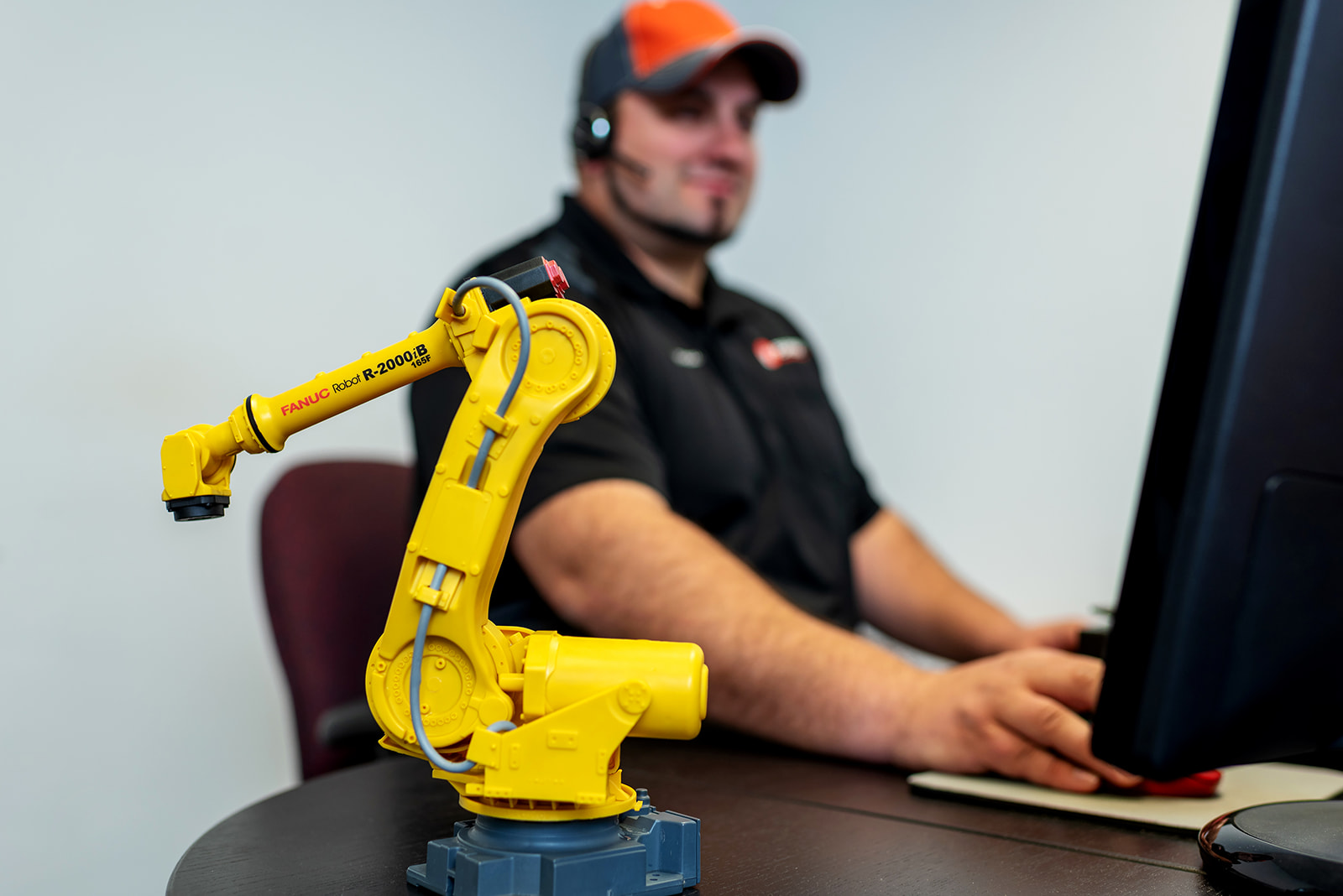– Considerations for the long term when investing in automated equipment –
Automating your packaging process is a significant monetary investment and it might be tempting to pick the lowest quote with the fastest return on the investment. Many times, smaller OEMs with localized reach can significantly underbid because they don’t have the same overhead cost that a larger organization has. However, what may seem cost-effective today could turn into an expensive headache in the future. This is not to say that the cheapest quote or a small company couldn’t be a good fit for a particular project, depending on the requirements. The following discussion takes a closer look at considerations beyond the equipment that may be important to you when selecting the right secondary packaging OEM partner to support your operation in the long run.

Single-Source Supplier
Having the ability to purchase all or most of the equipment in one line – case formers, packers, case sealers, palletizers, conveying, etc. – from a single source offers multiple benefits. Uniformity in machine designs make integration more seamless and reduces the need for a large array of spare parts. Consistent HMIs (Human Machine Interfaces) reduce training needs across the line. Your staff won’t be limited to operating only select pieces of equipment they are familiar with but can move around flexibly to support in different areas of your operation.
Working with a single OEM also simplifies logistics. Avoid managing and coordinating multiple vendors, sidestep the risk of the back-and-forth and finger-pointing between vendors when something goes wrong, and enjoy a single point of contact that knows the ins and outs of your entire line while taking full responsibility for it.
Explore Pearson’s complete Erect-Pack-Seal-Palletize offering here.
Experience
Seasoned OEMs may have a better resource library of past applications (including 2-and 3-D floorplans, videos, etc.) to reference and pull technical concepts from. They are also more likely to have overcome similar challenges or handled products/cases similar to yours on past projects, giving them a leg-up compared to competitors offering first-of-their-kind solutions.
Machine Simulations/Emulations
Larger equipment manufacturers are more likely to have the advantage of access to advanced resources for proof-of-concept simulations and emulations. This can help you visualize how the proposed machinery will function, and often reduces lead times by allowing OEM engineers to vet solutions during the design stage and identify flaws or errors before the machine build begins. Without this technology, OEMs are forced to work through programming adjustments and debugging at a later stage of the project lifecycle, which can cause project delays.
Learn more about how Pearson leverages Digital Twin Technology to better communicate and collaborate on complex solutions, proactively identify design issues as well as test and troubleshoot here.
Machine Usability
If you know, you know: operators come and go. So, the value of having machinery that is intuitive to learn is invaluable. Ask your prospective OEM what features make their machines simple to operate, maintain, and troubleshoot.
At Pearson, we call it User Centric Design, where machines are designed with users top of mind. The principle is backed by intensive in-field and lab observations of and consults with real customers. These observances, along with extensive testing, have led to many improvements as simple as a lighter machine color and interior lighting to improve visibility for technicians, redesigns of changeover points to improve accessibility and make it easier for a person with less strength or reach or making a large number of features standard so the user experience is as positive as it can be.
The HMI being the interface to the machine is icon-based and features images, maps, and step-by-step instructions to help your staff carry out changeovers, identify and resolve faults, and execute maintenance tasks quickly without intensive training. Numbered handles, scales, and other adjustment points on the machine map match up to labeled changeover points on the physical machine, so even novice users can switch to a new pack arrangement or case size.
Customer Support
Arguably the most important thing to consider though is how well the OEM you’re considering can support you when you need it. Downtime situations can become exorbitantly costly very quickly, so being confident that you’ll receive a fast response from a capable technical group should be a primary factor in your qualification process.
Pearson has optimized not only the machine design but all of our processes around the needs of our customers operating 24/7. Our technical support team is available to all customers around the clock. While techs can be deployed in 24hrs if necessary, 90% of all inquiries are resolved remotely with tools including augmented reality video apps or Remote Access – a capability that is standard on all equipment.
Also take into account the process of replacement part ordering, or the availability of support should you need to introduce new products, cases, or have pack quantity/pattern changes, often resulting from changing retailer requirements. Many smaller OEMs don’t have dedicated post-sale departments, which means you’ll end up in a “shared queue” and possibly prioritized behind new machine sale opportunities.
Pearson offers an online parts store where customers who know their Pearson part numbers can price out parts and order them directly any time of day or night. A large parts team is available to support specific research needs and address customer questions. Additionally, a dedicated Aftermarket group is available to help with any post-sale upgrades or machine modifications necessary to accommodate things like new product or case introductions, or other operational changes.
Learn more about Pearson’s Aftermarket and Service offerings.
